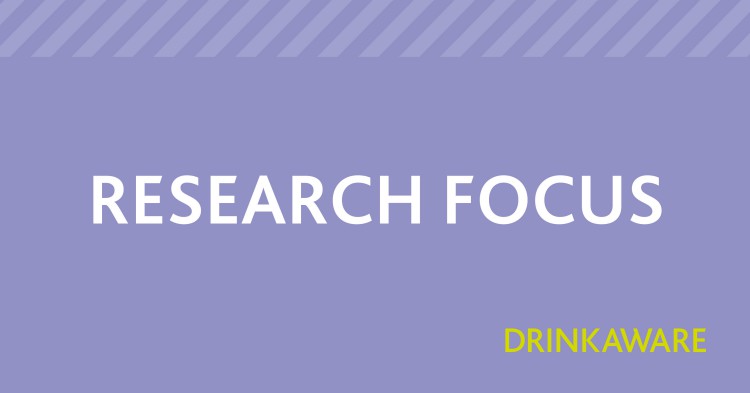In our previous blog, we briefly discussed the impact of Covid-19 on young adults.
This blog continues the exploration of the experiences of 18-24-year olds’ during the restrictions of the COVID-19 pandemic in terms of their behaviours and attitudes towards alcohol, highlighting that although alcohol consumption, alcohol misuse and drinking alcohol to cope has increased among young adults, many in this age group have also decreased their alcohol consumption.
Traditionally young adults tend to have a higher prevalence of alcohol consumption and binge drinking than other age groups. Young adults are also overrepresented when it comes to more negative consequences of drinking, as revealed through The Healthy Ireland Summary Report 2021 and The 2019-20 Irish National Drug and Alcohol Survey.
However, many young adults at the same time are drinking less and the decline in youth drinking is well-established. At the same time, when comparing the State of Health in the EU’s Country Health Profiles, Ireland compares relatively favourably to its European counterparts when it comes to heavy alcohol consumption amongst young people.
When we look at behaviours and attitudes towards alcohol, we often find many contradictions, and young adults are no exception – young adults are drinking less but also have higher rates of alcohol misuse. Alcohol data is complex and should not be viewed in isolation. This blog aims to provide a brief overview from data gathered during the Covid-19 pandemic through Drinkaware’s Annual Barometer survey and research paper series.
Weekly Alcohol consumption levels
Across all the age cohorts, the highest increases in weekly consumption between 2020-2021 were amongst the younger 18–24-year-old age cohort at 51% (+13% vs 2020).
The 2019–20 Irish National Drug and Alcohol Survey also reported similarly that almost one-half (49%) of 15–24-year-old drinkers drank alcohol at least once per week.
Prevalence of binge drinking
Despite the data highlighting that the 18-24-year-olds were more likely to report that they had decreased the amount of alcohol they drink since the start of Covid-19 at 41% (35% nationally). The data when it comes to consuming 6 or more standard drinks defined by the HSE as binge drinking, seems to show the opposite. The highest increase in the prevalence of binge drinking between 2020-2021 was amongst the youngest 18–24-year-old cohort at 60% (+5% vs 2020) and (49% nationally).
The Healthy Ireland Summary Report 2021 indicates that those aged between 15 and 34 are most likely to have engaged in binge drinking – 30% of 15 to 24-year-olds report having done so. That report also indicated that young men were nearly three times as likely than young women (44% vs 16%).
The 2019–20 Irish National Drug and Alcohol Survey also found that the 15-24 cohort disproportionately represented those who consumed at least six standard drinks on a typical drinking occasion, those who engaged in heavy episodic drinking, those with a high AUDIT-C score or those with Alcohol use disorder.
Drinking motivations
In the Barometer series, there are four groupings of drinking motivations and what is notable is that the 18-24 cohort disproportionately represent three of those groupings by quite some distance over the 25-34 age group.
Coping is a key driver for increases in drinking during the COVID-19 pandemic in both 2020 and 2021 with the incidence of coping motivations being consistent with age. Yet, it did peak in 2021 among younger adult cohorts (72% of 18-24 years).
The second most common motivation reported was enhancement (57%) in 2020. Nonetheless, drinking for enhancement reasons increased to 66% in 2021 and became one of the two main motivations for drinking in 2021 for those between the ages of 18-24 at 83%.
Social motivations were not a statistically significant motivation overall in both 2020 and 2021. In 2020 and 2021 the incidence of social motivations was cited at 82% in 2020 and 84% in 2021 for those between 18-24, which was 33% higher than the average in 2020 and 28% higher than the average in 2021.
Non-drinkers
At the same time, the 18-24-year age cohort were the largest group of adults in the Barometer 2020 that reported not drinking at all during the initial lockdown phase (17%).
According to The 2019–20 Irish National Drug and Alcohol Survey, 25.7% of those surveyed were defined as non-drinkers. The second highest proportion of non-drinkers were in the 15–24-year-old age group at 28.2%.
The references that have been cited for the Drinkaware data are our Barometers for both 2020 and 2021. As seen in the data above, alcohol data is complex, but this blog has outlined that alcohol consumption and binge drinking did increase amongst young adults during the restrictions during the Covid-19 pandemic. This blog also briefly discussed the motivations behind why young adults drink and noted the levels of those young adults who do not drink.


